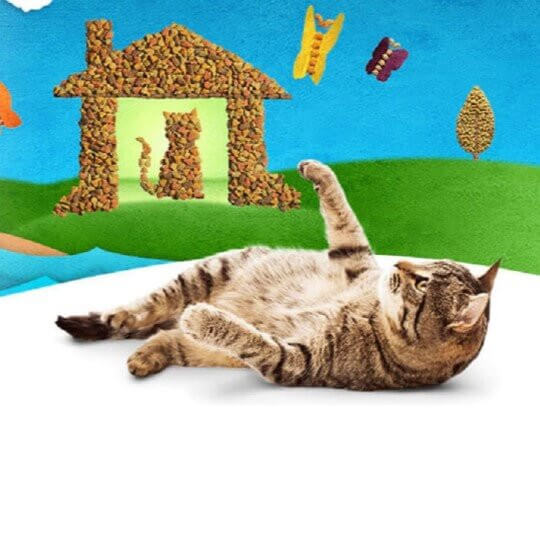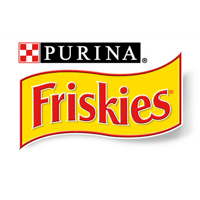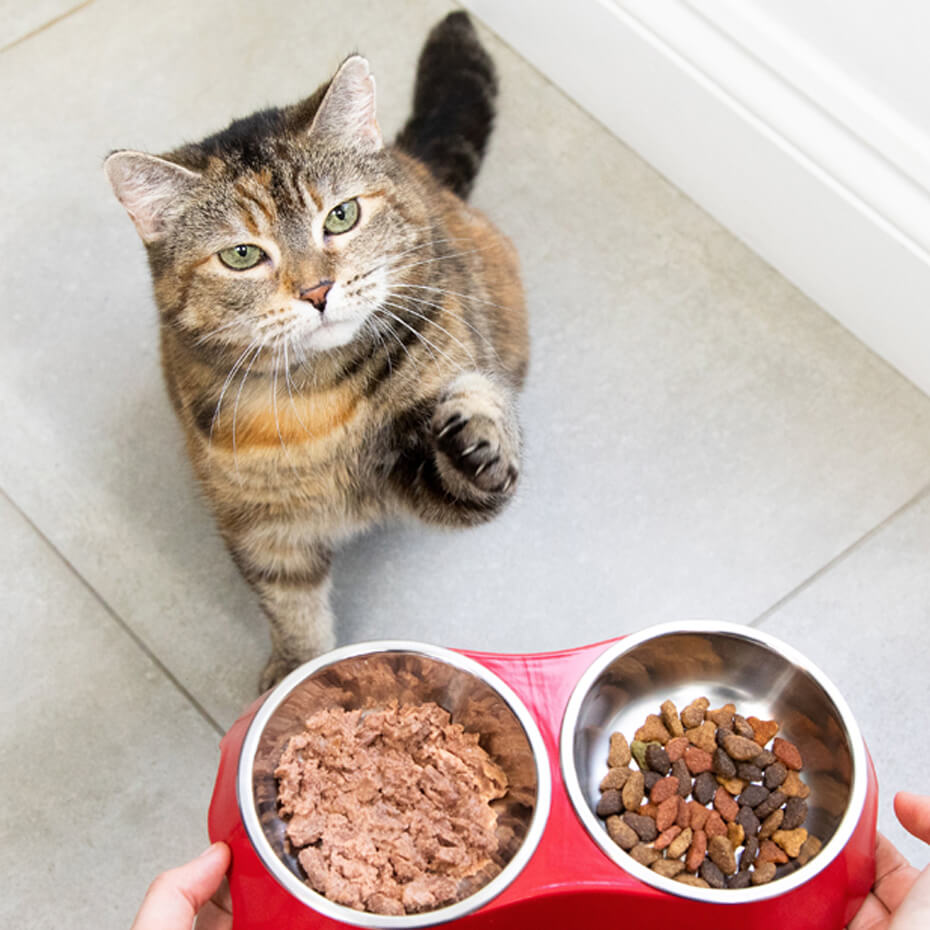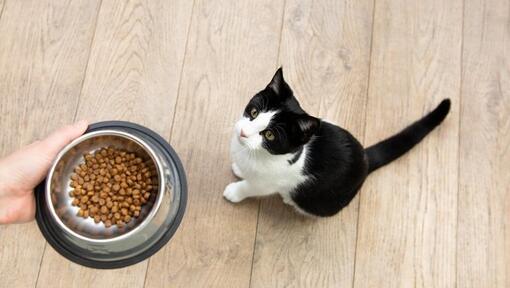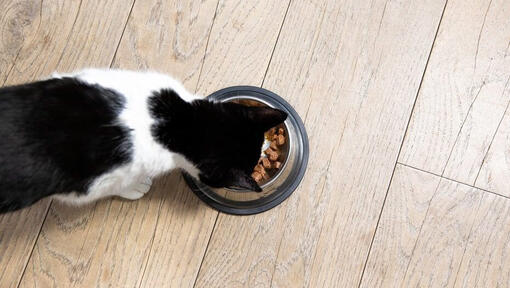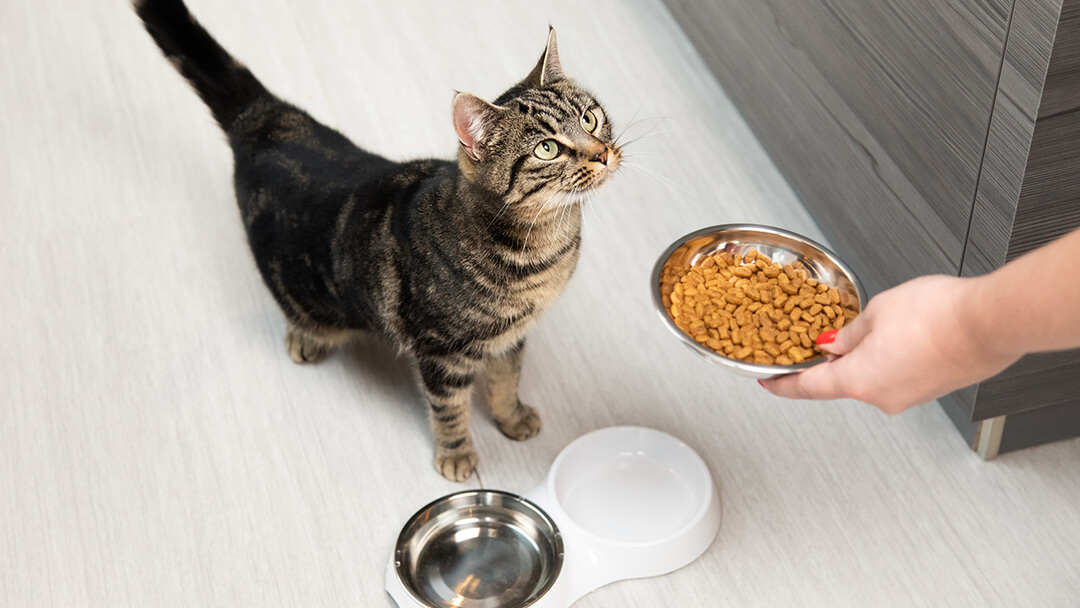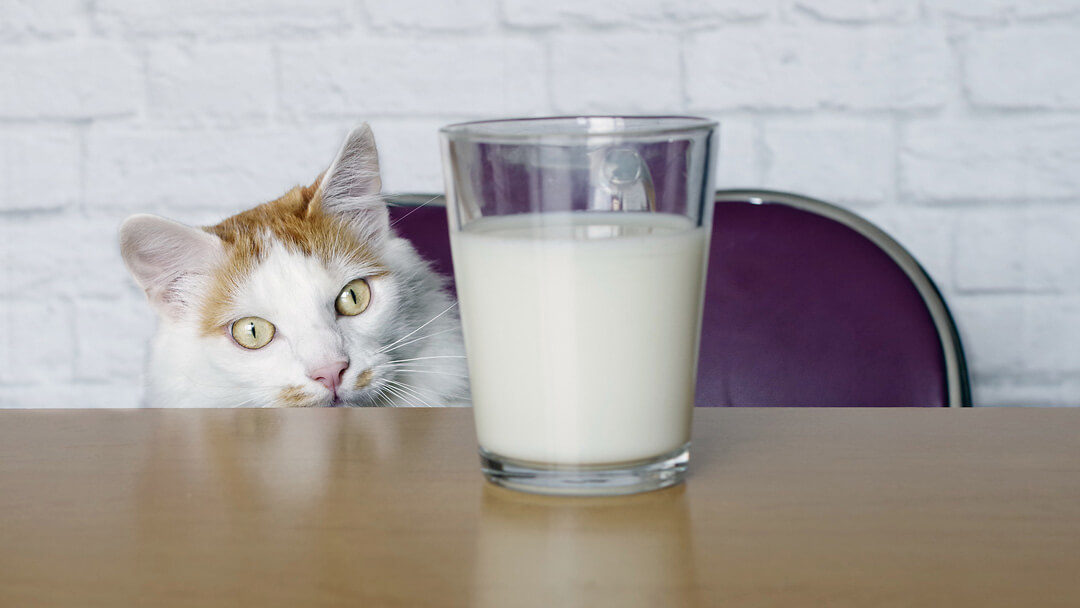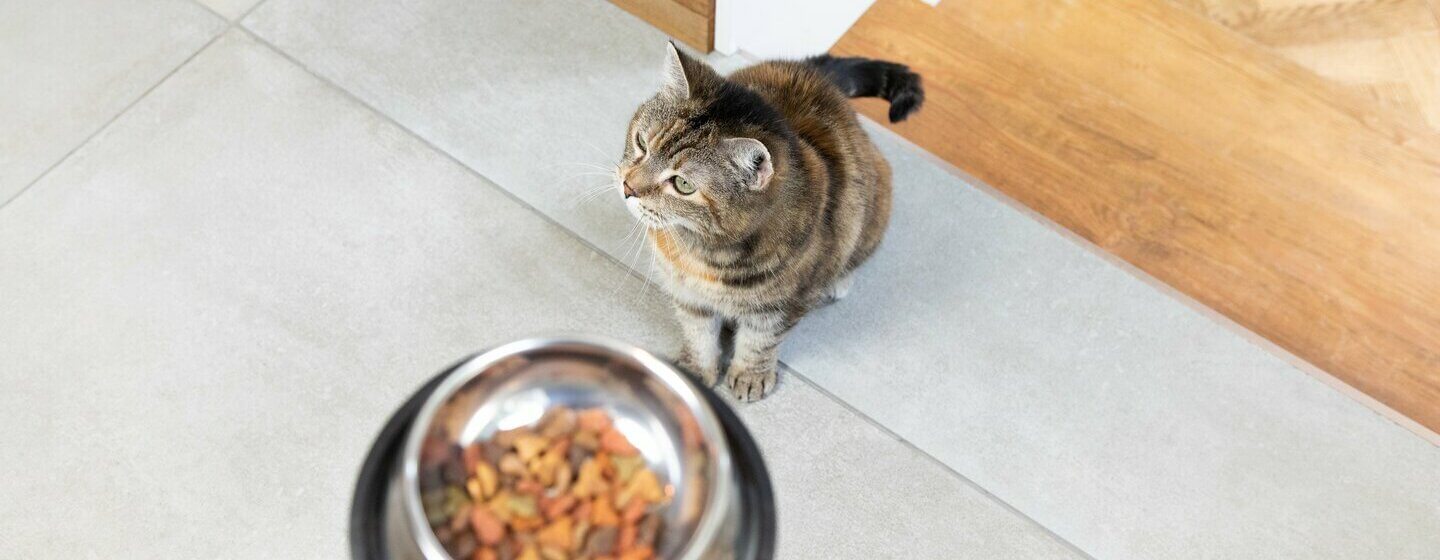
As indoor cats don’t have the same opportunities to exercise as their outdoor counterparts, it can be tougher for them to keep trim.
Even though your pet is living in a cosy, happy environment, being inside still limits the space they have to stretch their paws. This less active lifestyle can mean that some indoor cats can struggle to maintain their natural slender shape, and are more at risk of developing health problems such as obesity or diabetes.
Fine-tuning a feeding routine and keeping your indoor cat moving are the two key factors in keeping your feline friend as healthy and happy as possible. Follow our tips on steps you can take to keep your cat in tip top shape.
How to feed your indoor cat
As cats are natural grazers, they are happy to nibble on dry food left out for them during the day (wet food will go stale too quickly to be left out). It can be easy to lose track of what your cat has eaten, especially when you’re leaving food out for them. To avoid overfeeding them, carefully measure each meal according to the serving guide on the food packaging.
Cats can also learn to adapt to be fed several small, measured meals a day, if it suits your routine better. If you prefer to do this, then feed your cat little and often throughout the day to keep their energy levels up, but avoid weight gain.
Measuring portions is even more important if your cat has already put on a few pounds and is on a diet. Remember that before you make any changes in your cat’s feeding routine, consider their body condition and consult your vet – using our body conditioning tool will confirm if your cat is overweight, and your vet can give you advice on how to carefully adjust your pets feeding routine.
"Measuring portions is even more important if your cat has already put on a few pounds and is on a diet."
There are foods specifically developed for indoor cats, to ensure that your pet is getting everything that they need from their food. These special diets have the following benefits that make them best suited to your indoor cat:
High in protein and lower in calories to help your pet stay lean.
A careful balance of essential minerals that help to reduce the risk of health issues, such as urinary problems.
Packed with nutrients that are essential to maintain a healthy skin and coat.
High levels of indigestible fibre to help prevent fur balls, by gently easing any hair eaten during grooming down through their digestive system.
Special fermentable fibre that works with the bacteria in your pet’s tummy to reduce any nasty toilet smells.
Highly digestible ingredients help to form smaller, more solid number twos which are easier for your pet to pass, and for you to clean up.
It’s also still just as important to make sure that your indoor cat has plenty of access to fresh, clean water.
Once you’ve got an effective feeding routine sorted for your furry friend, it’s time to look at exercise.
Exercise for indoor cats
Exercise for indoor cats is important - you can help to gently encourage them to get active by making sure they have fun whilst they get moving. There are a few things you can do to make a work-out enjoyable for your pet – and you can get involved, too!
- Dedicated time to play every day – rolling a ball or dangling a “fishing” toy will keep your cat moving and also make you a part of their fitness regime.
- Climbing and scratching towers give your cat new heights to conquer, and satisfy their curiosity to explore.
- Put some of their allocated food portions into a feeding ball, so that your pet needs to spend time playing with the toy to release the tasty treat inside.
- Place food at the top of the stairs or climbing tower – you’ll be surprised at how willing your cat will be to climb if it means a tasty morsel in return!
- Consider options for letting your cat explore the great outdoors. Either a playpen, a fenced off garden or a short walk on a lead can all help your cat to get more exercise every day.
With a little guidance from you, your indoor cat can be just as happy, healthy and entertained as one used to the outdoors.

